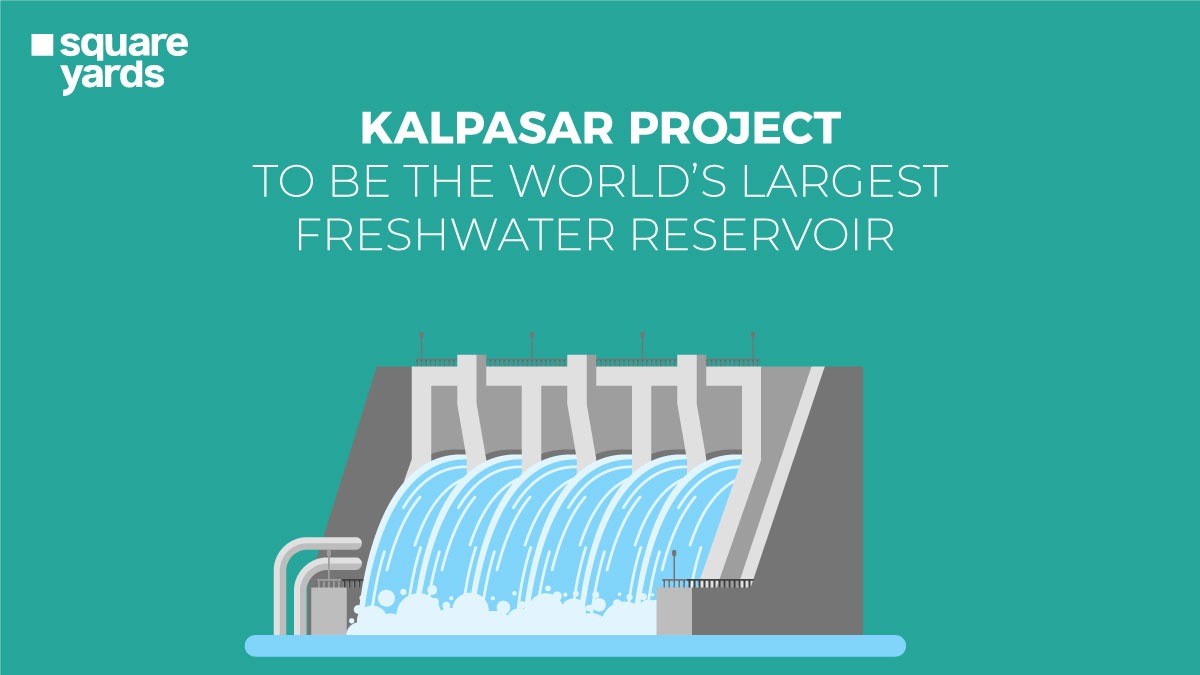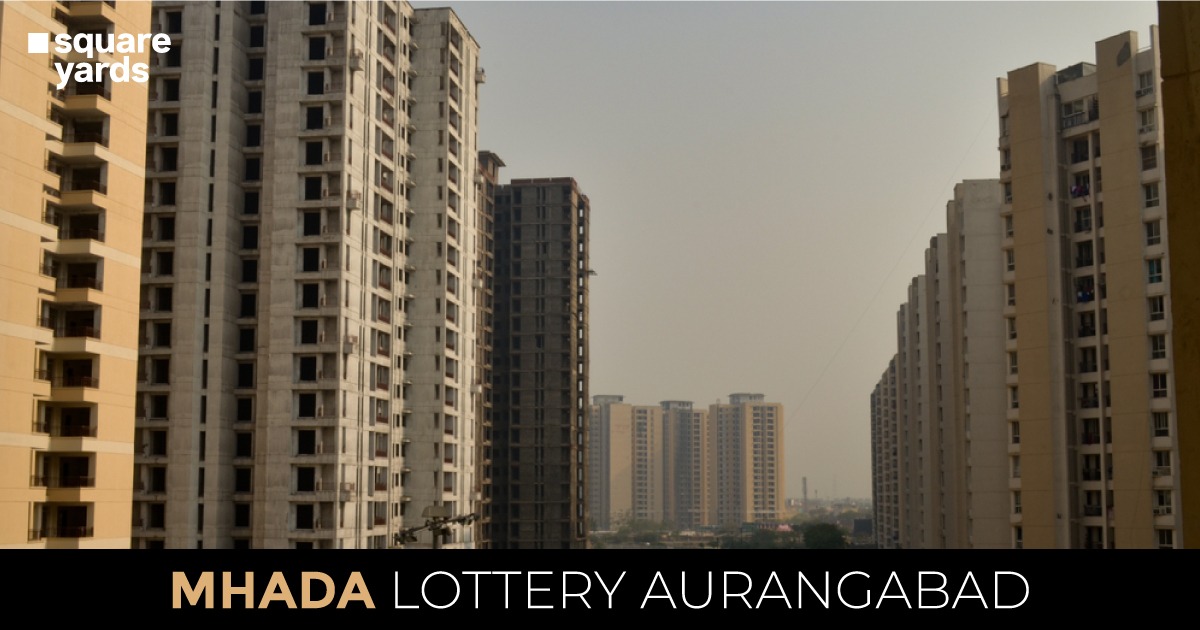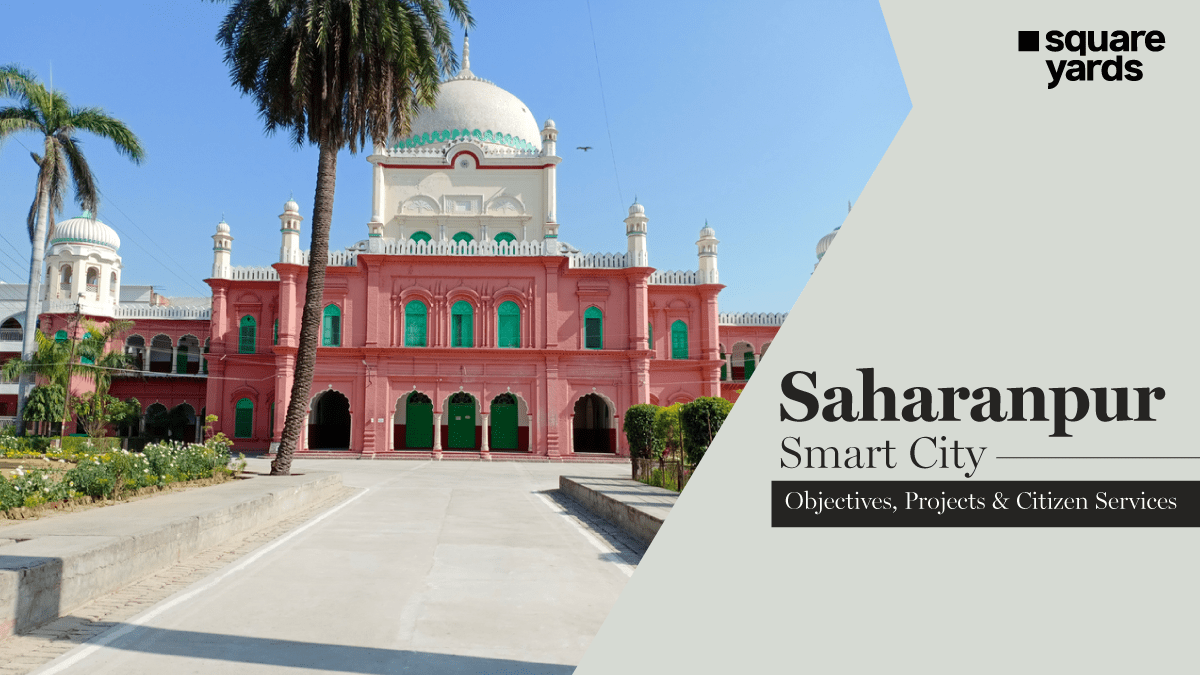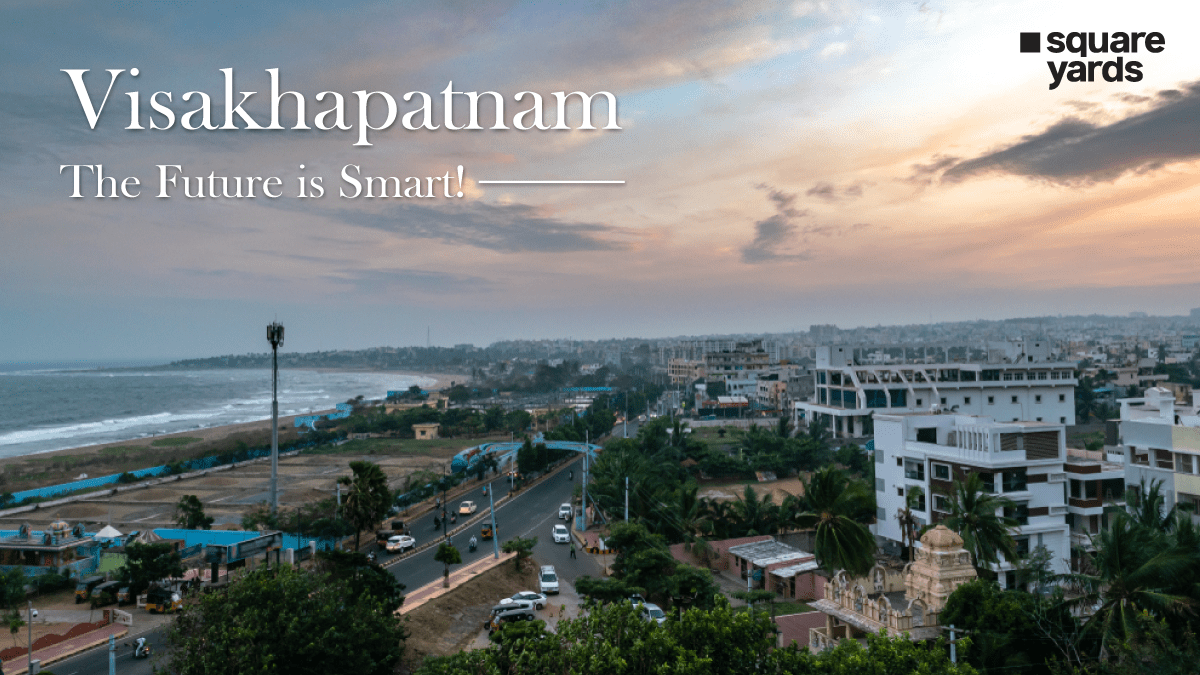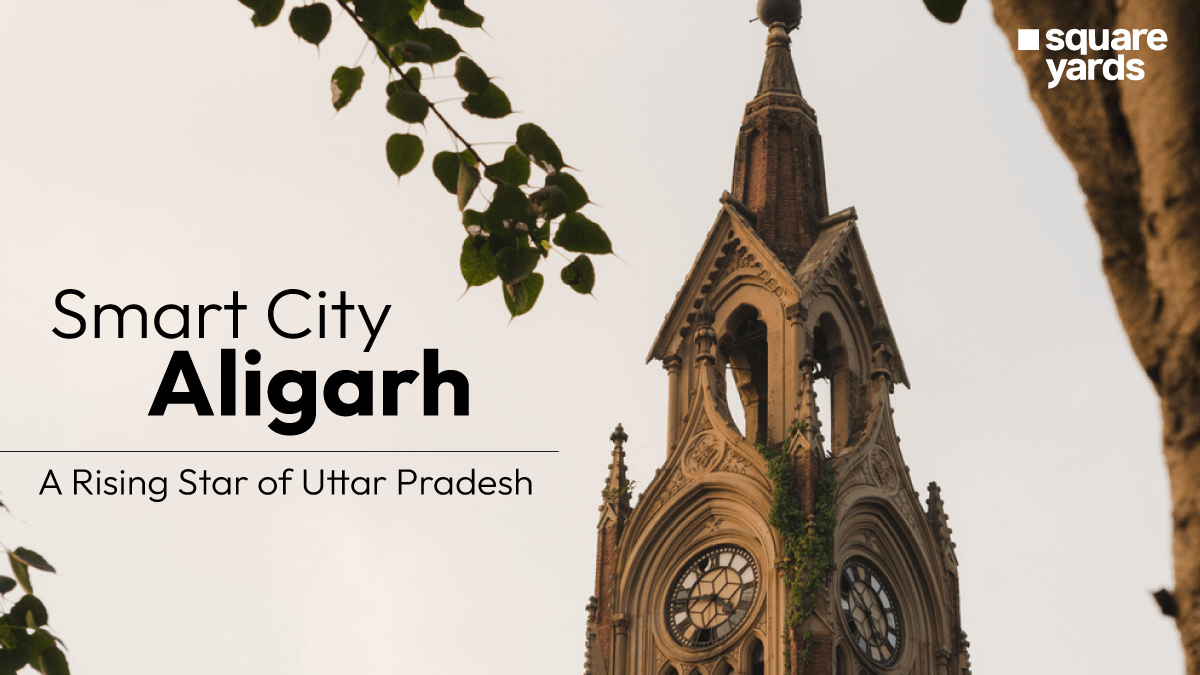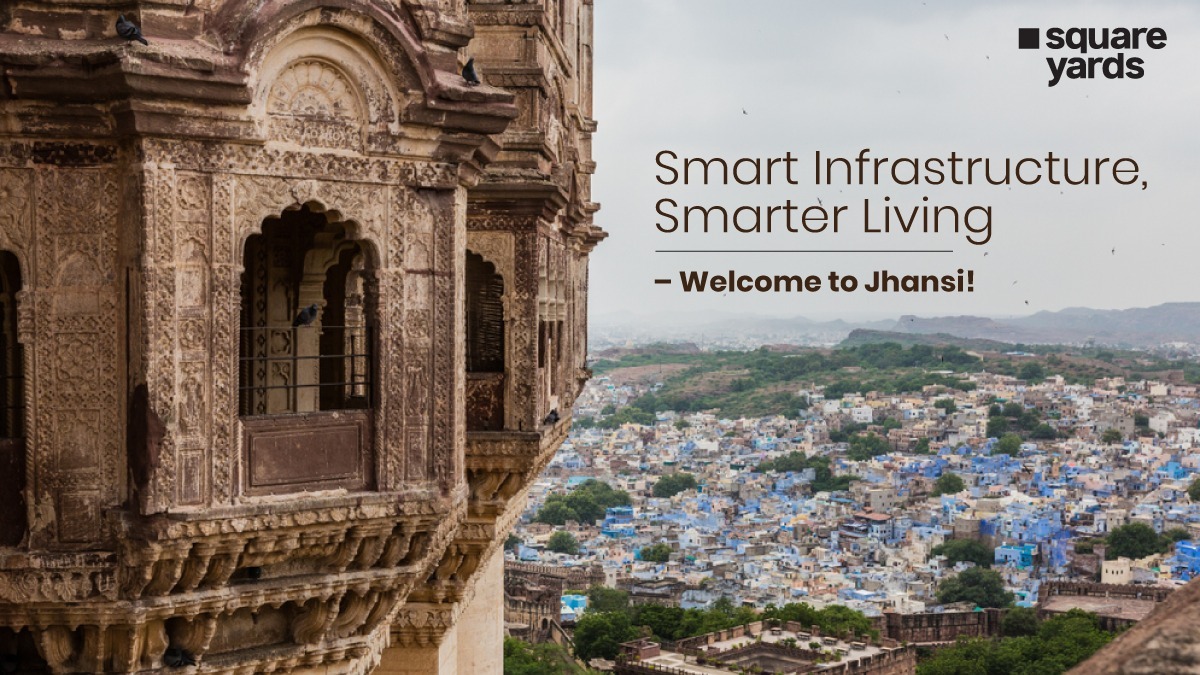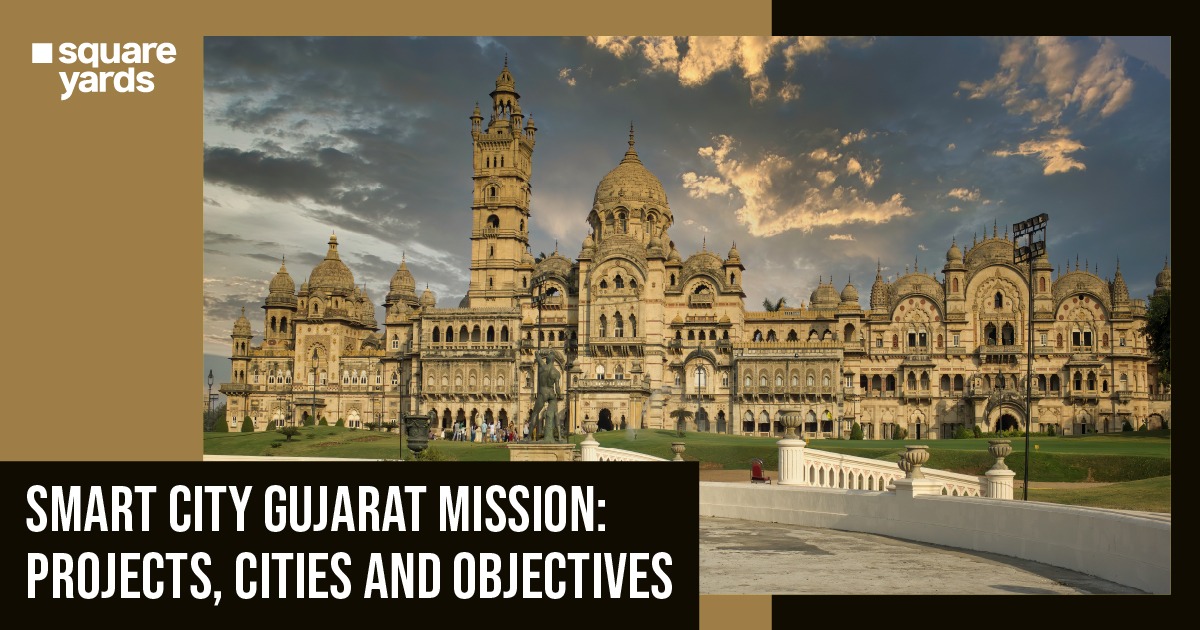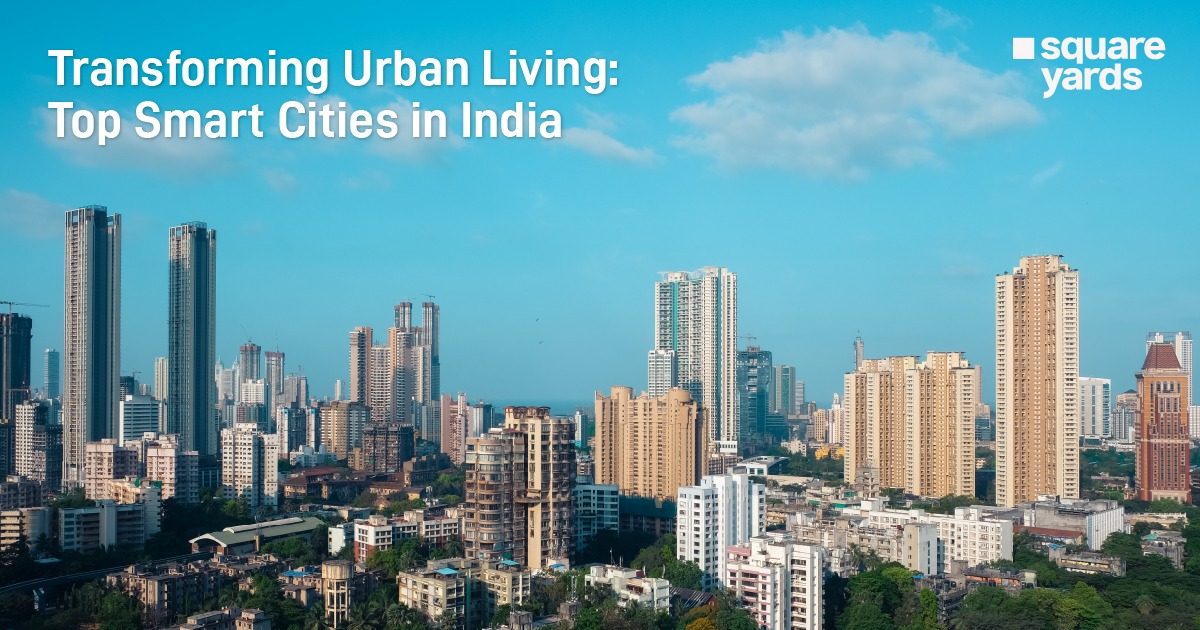The Kalpasar Project is a development of a water resource project. It is also known as the Gulf of Khambhat Development Project. A 30 km long dam will be created across the Gulf of Khambhat. The Ministry of Earth Science is working on a detailed project report stating that the Kalpasar project cost will be around Rs. 47,000 crore.
Since its the largest reservoir, the Kalpasar Project is enough to fulfil the water requirement of the state of Gujarat.
Moreover, the project has the potential to develop renewable energy, fisheries and abolishment of saline land.
The expected completion date of the Kalpasar Project is around 9-12 years, between the years 2032- 2035. Once completed, the project will be the world’s largest artificial freshwater reservoir.
The Kalpasar Project tender is available to fill from The Gulf of Khambhat Development Project (Kalpasar).
Table of contents
Definition of Kalpasar
According to Hindu mythology, the Kalpasar is defined as “A tree that fulfils all wishes”. The word is contrived from Hindu mythology “Kalpa Vriksha”, which means wishing tree.
What was the Idea Behind Kalpasar Project?
Kalpasar Project, also known as the Gulf of Khambhat Development Project.
The idea is to construct a 30 Kilometres long multi-purpose dam around the Gulf of Khambhat.
According to the project, a freshwater reservoir the upriver of the dam, is to be constructed. The gulf of Khambhat is fed with appropriate water by several rivers, including Sabarmati, Ghelo, Bhogavo, Kalubhar, Meshavo, Mahi, Narmada, Dhadar, and Vatrak.
If executed correctly, the Kalpasar Project will resolve the four major problems of the Gujarat State, which are rail-road transport, port development, freshwater issues and electric power supply.
The Kalpasar Project status is that the twenty-five surveys out of forty-three have been completed, while eight are either underway or are yet to be commenced.
What is the Need for Kalpasar Project?
The Kalpasar is the dream project of the government as it will resolve several issues and will also provide various advantages to the state of Gujarat.
The Saurashtra region has an uncertain water availability for drinking and irrigation purposes, making it unsuitable for farming. The Kalpasat Project will supply irrigation water to 1 million hectares of land in the Saurashtra region.
The water is saline in the Saurashtra and Central Gujarat; therefore, the project will turn the water suitable for drinking.
Gujarat is one of the advanced industrial sectors in India and requires more electrical energy to feed the factories. The Kalpasar Project will help build solar and wind power parks that will provide sufficient electric power supply in Gujarat. The distance between South Gujarat and Bhavnagar is 374 Kilometres, which will be cut down to 136 Kilometres. This will help in cutting the cost of transportation of goods.
What are the Objectives of the Kalpasar Project?
The Gulf of Khambhat is shrouded by the mainland of Gujarat and the Eastern coast of the Saurashtra peninsula. A huge amount of water gets drained out annually.
Therefore, the government perceived that it could be a solution to resolve drinking and irritation problems in Gujarat, peculiarly in the Saurashtra region.
The Kalpasar Project is contemplated to be the right solution for solving drinking and irrigation issues in Saurashtra.
The objective of the Kalpasar project is to create a freshwater reservoir by the construction of a dam in the Gulf of Khambhat. The dam will connect the west and east bank of the Gulf.
The reservoir will store the streamflow of rivers like Narmada, Dhadar, Mahi and Sabarmati, along with the Saurashtra rivers. Later, the water will be supplied for irrigation and to fulfil the industrial requirements of the Saurashtra.
Once the project is completed, it is evident that the water level inside the reservoir can be controlled.
Moreover, tidal fluctuation can be used for the generation of electricity.
Along with the tidal energy generation and freshwater depository, the Kalpasar project will also enhance transportation, fisheries development and land reclamation.
Technical Objectives of the Kalpasar Project
Gujarat occupies 6.4% of the terrestrial area of India and has about 5% of the country’s population. Still, the surface water is relatively low, which is just about only 2%.
India’s per capita water is 1700 cubic meters annually, but Gujarat’s water availability per capita is just 990 cubic meters, which is below the average requirement. It is not enough to fulfil the water requirement, as only 38,000 million cubic meters of surface water are available in Gujarat. However, the Sardar Sarovar Project (SSP) can store 20,480 cubic meters (54%), which is not enough to fulfil the demand even if included.
In Gujarat, suitable lands are not present on-site to create a valley project to store untapped/surplus water above 40%. In that case, the Gulf of Khambhat is in the right place to construct a Gulf closure dam. The dam will have a capacity to store about 11,000 cubic meters of water from rivers like Sabarmati, Dhadhar, Narmada, Mahi and other Saurashtra rivers.
Rehabilitation of people or land acquisition is not required to create a freshwater reservoir. The reservoir will accelerate the economic development of Gujarat.
Moreover, it will fulfil basic needs like drinking water and the Saurashtra region.
The Gulf of Khambhat has an extension from south to north of about 200 Kilometres, while the width range of 25 Kilometres to 150 Kilometres. The total area covered is 17,000 square Kilometres. However, only 2,000 Square Kilometres will get surrounded by the dam around the Gulf between Dahej and Bhavnagar.
The Benefits of Kalpasar Projects
The benefits of The Kalpasar Project are as follows:
- Post completion of the Kalpasar Project, it will be the largest artificial freshwater reservoir.
- The priority of the project is to supply drinking water to Saurashtra and the Central Gujarat region.
- The Kalpasar Project will facilitate irrigation water for over 10.54 lakh hectares of land and over thirty-seven Talukas of Saurashtra.
- Moreover, more than sixty existing dams will have a permanent water supply.
- The reservoir will have the capacity to store double the amount of water of Sardar Sarovar (Narmada Reservoir).
- A Solar and wind power park will generate the electricity required to lift fresh water from the reservoir for irrigation and domestic use.
- More than 1.2 lakh hectares of land will be open for the development of value-based land utilisation.
- The distance will be reduced by 136 Kilometres from Bhavnagar to Mumbai/Surat
- The development will be boosted as the Bhavnagar port will get revived
- Bhavnagar/Saurashtra region will be getting enhanced benefits like the industrial estate Dholera and Dahej.
- Saline groundwater will get converted into freshwater; thus, it will reduce the soil salinity of Saurashtra and Central Gujarat.
The detailed benefit of Kalpasar Yojana,
The Kalpasar Yojana, will provide several advantages to Gujarat. This will undoubtedly help in boosting the economy and creating cleaner and greener energy sources.
Here are the benefits of Kalpasar Yojana in detail:
Water Availablity for Domestic Use
A survey found that the growth of the population would reach the base level by the end of 2055 in Gujarat.
The population cap is around 36 million in the area at the moment, with severe water deficiency.
Considering the data, the industrial and domestic demands are approximately 7,407 Minimal Liquid Discharge. However, the Kalpasar Freshwater reservoir will supply 900 million cubic feet of water for domestic and industrial use.
Irrigation Facility from Freshwater Reservoir
Post completion of the Kalpasar Project, the freshwater reservoir will have a volume between -5 m to +5 m at Sea Level. Over 5,891 m3 of fresh water will be available to irrigate.
In a detailed study, the volume has been estimated at 12,500 million m3. The volume partially equals the average annual surplus water inflow from numerous rivers to the Gulf of Khambhat.
Over 10.55 lakh hectares of land will get irrigation facilities, and saline land of about 1,20,000 hectares will be available for cultivation.
Tidal Power
There is an ever-increasing energy demand in Gujarat as agricultural and industrial activity is rapidly increasing. To fulfil the demand, the Kalpasar Project is capable of providing sustainable and renewable energy. Moreover, this project will generate around 6,000 megawatts of clean and renewable energy. This will enhance the economic growth of the western region of India.
Roadways Development Between Central Gujarat & Saurashtra,
The Kalpasar Project will connect the Eastern coast of Gujarat with the Saurashtra region. The total distance will be reduced by 225 Kilometres. The project will work as a tool, causing a reduction in the cost of fuel for the transportation of goods and services from Dahej and Ghogha.
| From (City) | To (City) | Present Distance | Crossing the Gulf of Khambhat | Reduced Distance |
| Mumbai, Maharashtra | Bhavnagar, Gujarat | 720 Kilometres | 460 Kilometres | 260 Kilometres |
| Mumbai, Maharashtra | Jamnagar, Gujarat | 830 Kilometres | 720 Kilometres | 110 Kilometres |
| Mumbai, Maharashtra | Porbandar, Gujarat | 930 Kilometres | 770 Kilometres | 160 Kilometres |
| Baroda, Gujarat | Bhavnagar, Gujarat | 280 Kilometres | 160 Kilometres | 120 Kilometres |
| Baroda, Gujarat | Porbandar, Gujarat | 490 Kilometres | 470 Kilometres | 20 Kilometres |
Fisheries Development
The Kalpasar Project will develop fisheries of both fresh and saltwater. It will also provide infrastructural facilities to support two major carp hatcheries.
Evaluating raw data states that Rs. 208 million will get generated annually by investing Rs. 1866 million. Furthermore, 9856 tons of fish production will give an approx additional amount of Rs. 685 million annually. The Kalpasar Project will also generate employment opportunities for individuals in the fisheries sector.
End Thoughts
Kalpasar Project is one of the megaprojects in Indian history. It will prevent the water from spilling from many great rivers into the Gulf of Khambhat and relieve the water-stressed Gujarat from a major problem.
From the Narmada river alone, more than 30,000 Million Cubic Metres flow out every year due to the lack of storage and absence of dams. Thus, the Kalpasar Project is a great initiative.
Frequently Asked Questions (FAQs)
Where is Kalpasar dam?
The Kalpasar dam is going to be constructed in the Gulf of Khambhat in Gujarat.
Which is the biggest water project in Gujarat?
The Sardar Sarovar Project is the biggest water project in Gujarat but also the biggest water project in India. However, the expected completion date of the Kalpasar Project is in the year 2032-35. It will be the most significant water project in India.
What is the Kalpsar Yojana in Gujarat?
The Kalpasar Project is one of the most significant water projects in India that is said to be completed by the end of the year 2032-35. This project is intended to create a 30 km long dam across the Gulf of Khambhat in Gujarat.


